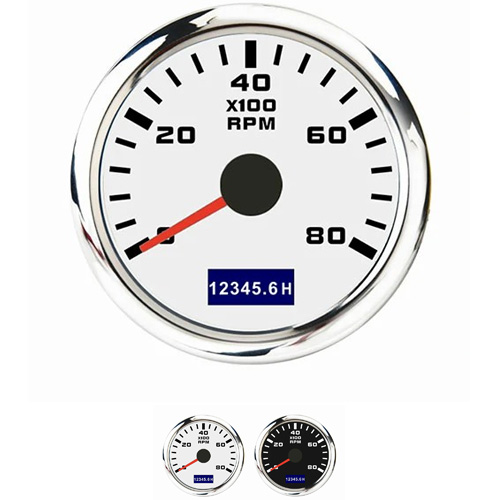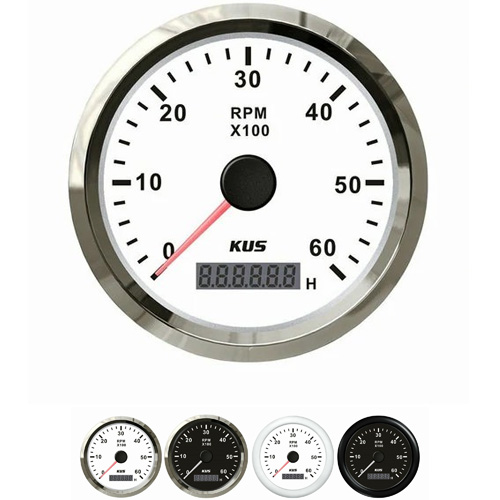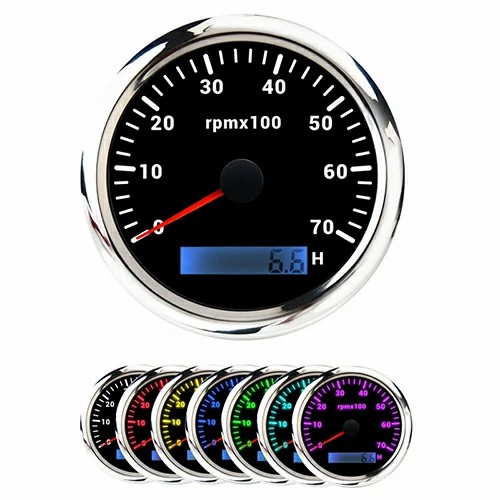small engine analog tachometer
Our small engine analog tachometer has 52mm and 85mm size.
Even though FPK is being popularized at an amazing speed, most OEMs, when designing FPK, need to read out the speed and speed at a glance, and tend to indicate whether the current data is normal (the relationship with a preset value), or display information of a certain proportion (similar to water temperature, oil volume, oil pressure, oil temperature, turbine pressure, etc.), This kind of instrument also uses analog graphical instrument to display.
When we look at the small engine analog tachometer, we focus on whether the current speed reaches the shift speed. The first reaction is the concrete information of the angle of the red pointer, and then we can interpret the specific number the pointer refers to - but, in general, this is unnecessary. At a glance, I saw that the pointer had broken 4000 turns, and it was almost ready to move up one gear. I didn't need to read the number pointed by the pointer. When you look at the digital table, you directly enter the slower level of abstract information processing. Instead, an abstract comparison is needed to compare the size of two numbers.
So when I open the manual gear, I occasionally take a look at the small engine analog tachometer. I don't squint to see which number the pointer points to, and then read the number. Instead, I directly watch the position of the pointer -- and the position relationship between the pointer tip and those big scales. I almost start to shift gears. If I am used to shifting 3000 gears, I just need to aim at the tip of the pointer and shift directly after it has crossed 3 major scales. Do not do any abstract processing in the brain.
The digital watch needs to first interpret the number of this pile of numbers, and then think about whether the number has exceeded the customary shift speed, and then decide whether to shift. All these processes are completely completed in the brain, in fact, there is no intuitive pointer table. The number table also involves a question of reading difficulty. The automobile pointer meter does not move very quickly, and the required information can be clearly obtained at any time. The number of the digital meter is constantly changing and beating in the original position, which makes reading more difficult than the pointer small engine analog tachometer.
 English
English 




Get a Quote / Info